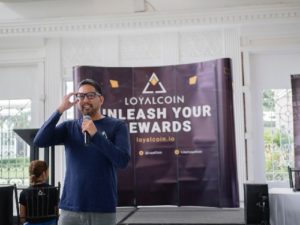Swipe cards and punch tags that add up to a free coffee, money off groceries or vouchers for family days out – loyalty programmes are still a big deal for retailers, airlines and hotel chains. But while discussions over how to best harness the changing habits of customers into schemes that bond them with brands through the offer of freebies rumble on, billions of dollars remain unused. Even with the rise of smartphone apps to keep check on the growing pile of tokens, confused customers are still failing to take advantage of the bonuses on offer.
The rewards points and air miles business is worth around $48billion in the United States.
A survey by marketing experts Bond Brand Loyalty – which used data from 28,000 consumers and investigated more than 400 loyalty schemes – estimated there are $100billion of unused loyalty points in the US and Canada. This proves there are still strong ties to such programmes from the money-spending public. And they remain popular across the board.
Management consultants Accenture found that around three quarters (77%) of consumers in the US have joined a retail loyalty program, while just under half (46%) are members of a hotel loyalty schemes and 40% collect air miles. The picture in the UK is similar – many customers joining schemes but, on the whole, not getting the most out of the points they earn. The average British consumer is a member of five different loyalty schemes that earn them around £112 each year, according to research by discount website TopCashback.co.uk. More savvy users net in the region of £500 annually, with the total rewards earnings in the UK reaching £5.7billion every 12 months. The most popular programmes are supermarket Tesco’s Clubcard and the Advantage Card used by pharmacy chain Boots, which both reward a point for every pound spent. Nectar card, devised by another supermarket chain Sainsbury, also remains popular. But there are 10 million people in the UK with unused loyalty points.
Ben Perkins, Head of Consumer Business Research at accountancy firm, insists the sector is in drastic need of change. He said: “Traditional loyalty schemes need a rethink not only because of changing consumer expectations but also because they have become expensive to run and difficult to unwind. They still have some appeal, one in five of consumers would stop shopping with a brand if they were to end their loyalty scheme. However, for the majority of customers these schemes are too generic and loyalty should be about more than collecting points.”
One way of joining the dots could be through use of blockchain technology that is powering the emerging cryptocurrency market, including Bitcoin and Ethereum. Philippines-based outfit LoyalCoin says it wants to create the “first global loyalty scheme” and has already signed a clutch of agreements with organisations such as airline Cebu Pacific, taxi-hailing service Grab and convenience store giant 7-Eleven. There are nine billion LoyalCoin in circulation and community of 250,000 growing all the time.

LoyalCoin COO, Paolo Bediones, said: “The idea is that customers can combine their loyalty points from different merchants into one place.
“That means they can much more easily keep track of them and trade them for things they actually want – and in more ways than they previously thought possible.”
The ecosystem it has created has two advantages over traditional loyalty schemes, LoyalCoin claims. Firstly, rewards points can be combined from various outlets into one place, the LoyalWallet that had a worldwide release last week. And company also offers a ‘cash-out’ service for tokens to be converted into other crypto or fiat currencies.
Mr Bediones added: “There are thousands of loyalty programmes but businesses still lose repeat customers who can’t keep track of them all and who can only use their points in a few places.
“With LoyalCoin it will be possible to use and trade them everywhere – it will unite all points and programmes into one.
“Businesses will gain customers and revenue, and people will actively use their rewards points. Meanwhile, coin-holders will see their points appreciate as the new loyalty economy expands.”





























